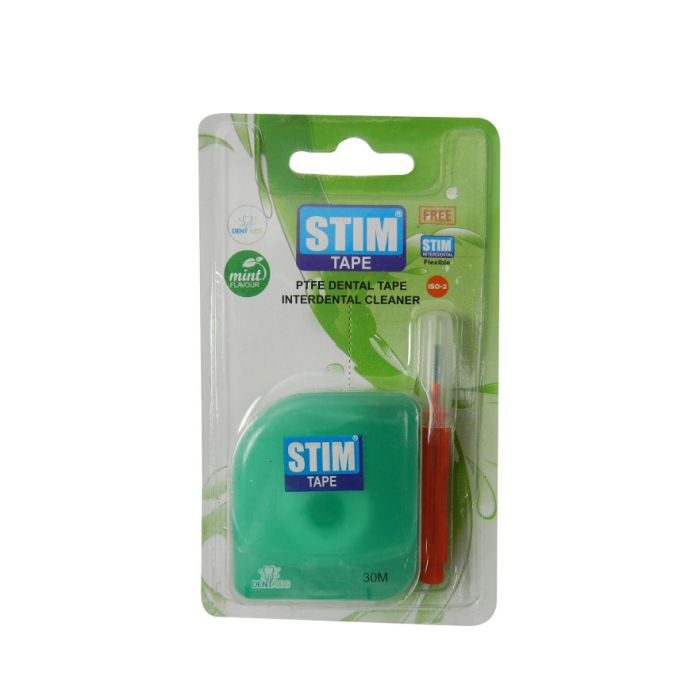What is Dental Floss or Flossing
I’m sure you know how vital it is to wash your teeth at least twice a day. But did you know that you should floss twice a day in addition to cleaning your teeth? Dental floss is a string of thin filaments used to clean between teeth and remove plaque and food where a toothbrush can’t reach.
Oral hygiene necessitates flossing. It cleans and eliminates trapped food between your teeth, lowering plaque and bacteria levels in your mouth. Plaque is a sticky coating that forms on the teeth and includes germs that can cause gum disease.
Gingivitis and plaque accumulation are usually prevented by flossing. Flossing, according to the American Dental Association, can help eliminate up to 80% of plaque and may have unique benefits for persons using orthodontic devices. However, actual scientific data demonstrating the therapeutic value of flossing as a supplement to brushing is lacking.
Tooth flossing is typically advised for persons with close interdental spacing since there is a chance that certain food particles may become caught and difficult to dislodge with tooth brushing or washing.
Why Is Tooth Flossing So Important?
If plaque is not eliminated, it can build up between teeth and harden into tartar, which is a hard deposit. Plaque and tartar both cause dental problems such as gum irritation, which leads to periodontitis and gingivitis. Plaque trapped between teeth can lead to a variety of dental problems, including:

The deterioration of tooth structure is known as tooth decay.
Gingivitis is a condition in which the gums enlarge and bleed.
Periodontitis is a disease that affects the bone and ligaments that support the teeth.
Tenderness, pus development, and the inability to chew food are all signs of a general decline in oral health.
Deteriorated dental health can result in the above-mentioned oral diseases, as well as serious medical disorders such as heart illness and even premature delivery. if you think you have a Dental Disease seek medical advice or get a online dental consultation from us
What Kind Of Dental Floss Should You Use?
There are several varieties of dental floss to pick from, but the two most common are:
(monofilament) polytetrafluorethylene (PTFE) floss
Floss made of nylon (or multifilament)
Waxed and unwaxed nylon floss are also available. The strands of waxed floss are then bonded together, whereas the filaments of unwaxed floss are separated. Unwaxed nylon floss is preferred over waxed floss because it cleans more efficiently. Nylon floss, also known as multifilament floss, is made up of several strands of nylon that can shred or rip, especially between teeth with tight contact points. The single strand (PTFE) floss, on the other hand, glides effortlessly between teeth, even those with narrow places, and does not rip. You can pick between the two options depending on who you are. Both are effective in removing plaque and dirt.
If regular flossing is too difficult for you, consider water flossing, floss picks, or other flossing equipment. Cleaning gaps between your teeth, regardless of the method you choose, can improve your dental health and keep your smile looking great.
What Is The Most Effective Way To Floss?
Now that you know how important flossing is for your oral health, you may be wondering how to floss properly. Flossing helps to prevent gum disease and tooth decay by eliminating plaque and debris from between your teeth.
Tooth flossing should be done at least once a day, according to the American Dental Association. The following is a list of sequential stages that can be followed:
Tear a length of floss about 18 inches long and wrap it around both hands’ middle fingers.
Tightly grip the floss between your thumbs and fingers.
Once the floss is in between the teeth and at the gum line, make a C-shaped curve around the tooth’s neck.
Then, using a gently rubbing motion, place the floss between your teeth, being careful not to force the floss straight into the gums. Do this for all of your mouth’s parts.
In an up and down motion, gently rub the floss against the teeth and move it away from the gum.
For each tooth, repeat these instructions.
After you’ve finished, throw away the floss. After you’ve used the floss, don’t use it again since it might reintroduce germs into your gums.
Should You Floss Your Teeth Before Or After Brushing?
Dr Arushi Sharma, BDS, a dentist in Delhi, recommends flossing before brushing. She continues, “The bacteria in your mouth multiplies quicker at night in the dark, warm environment of your mouth.” When you sleep, the amount of germs in your mouth more than doubles. If you go to bed with two billion germs in your mouth, you will wake up with four billion bacteria in your mouth.

In general, you should use your string floss first thing in the morning. By flossing away filth and plaque, then brushing for a pristine finish, you may swiftly eliminate the acidic bacteria.


